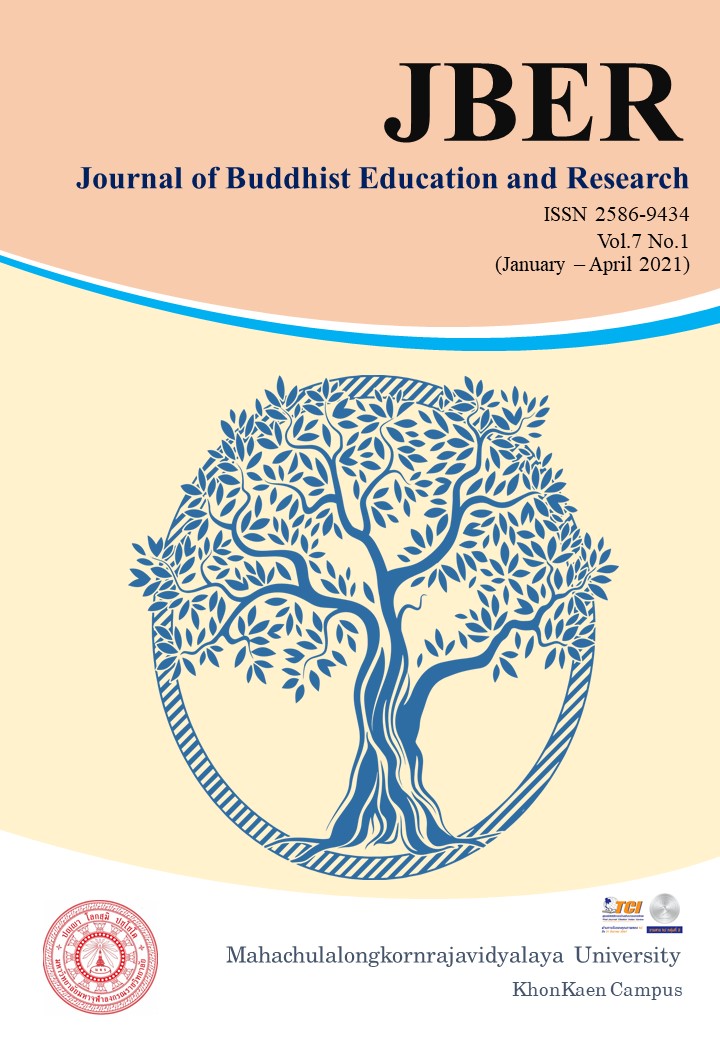Impact Of Burning Sugarcane Leaves Polluted PM 2.5 Nai -Muang Sub-District, Wiangkao District Khon Kaen Province
Keywords:
Burning, Impact, Sugarcane Leaves.Abstract
The objectives of this study were:1) to study the personal factors of the people in Nai-Muang sub-district, Wiangkao district, KhonKaen province, 2) the impact of sugarcane leaves burning polluted PM 2.5 in Nai-Muang sub-district, Wiangkao district, Khon Kaen province, and 3) to study the recommendations to protect the impact of sugarcane leaves burning polluted PM 2.5 and medical social welfare of the people in Nai-Muang sub-district, Wiangkao district, Khon Kaen province. The researchers collected the data from 383 sampling respondents by questionnaires and analyzed the data by descriptive statistics, percentage, mean, and standard deviation.
The findings were as follows:
The respondents, 52.20 percent, were male and 47.80 percent were female. The respondents,47.80 percent, were age between 21-40 years old. The respondents,34.20 percent, were graduated high school, and most of them, 56.40 percent, were farmers. They, 48.0percent, earned lower than 10,000 bath/month. The overall impact of sugarcane leave burning polluted PM 2.5 Nai-Muang sub-district, Wiangkao district, KhonKaen province was at high mean level(= 4.03). while considering in each aspect, it was found that all aspects were at high mean level, the aspect of ecological impact (= 4.09), the aspect of air pollution (= 4.05),the aspect of health care( = 4.05), and the aspect of acid soil(= 3.95)respectively.
References
ธีรารัตน์ จีระมะกรและคณะ.(2562). การประเมินการปล่อยก๊าซคาร์บอนไดออกไซด์ ของการปลูกอ้อยในจังหวัดบุรีรัมย์. วารสารวิทยาศาสตร์บูรพา.25(1),256-269.
ฐานเศรษฐกิจ.(2562). ทำไมต้องเผาอ้อย? เรื่องลึก ๆ ที่คนนอกวงการไม่รู้.สืบค้นเมื่อ 27 กุมภาพันธ์ 2563
จาก. https://www.thansettakij.com/content/379992.
ภัทรียา นวลใย.(2562). ทำไมต้องเผาอ้อย.สืบค้นเมื่อ 27 กุมภาพันธ์ 2563. จาก https://bit.ly/2vD5wmd.
สุดชล วุ้นประเสริฐและคณะ.(2554). การจัดการดินและน้ำเพื่อเพิ่มผลผลิตอ้อยตอในภาคตะวันออกเฉียงเหนือ. รายงานการวิจัย. มหาวิทยาลัยเทคโนโลยีสุรนารี.
สุพัตรา กิ่งไทร.(2560). ผลกระทบของการเผาอ้อยต่อพื้นที่เมือง กรณีศึกษาอำเภอเมืองและอำเภอบ้านบึง จังหวัดชลบุรี. รายงานการวิจัย. จุฬาลงกรณ์มหาวิทยาลัย.
สำนักข่าว กรมประชาสัมพันธ์.(2562). จังหวัดขอนแก่นเปิดงาน วันรณรงค์ไม่เผาอ้อย ไม่สร้างฝุ่นละออง
ลดPM 2.5 และแนวทางแก้ไข. สืบค้นเมื่อ 2 มีนาคม 2563. จาก https://bit.ly/3aHlcUl
สำนักข่าวสิ่งแวดล้อม.(2562). เผาอ้อยทำ ‘หิมะดำ’ ตกโปรยปราย ซ้ำเติมภัยฝุ่นพิษ PM2.5 พื้นที่กลาง-อีสาน. สืบค้นเมื่อ 27 กุมภาพันธ์ 2563. จาก https://greennews.agency/?p=20064.
Yamane, Taro.(1967). Statistic: An Introductory Analysis. New York: Harper & row.





